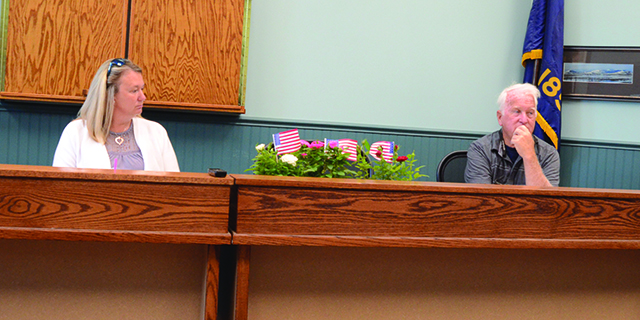Blue Mountain forest plan will consider two new alternatives
Published 1:27 pm Monday, March 28, 2016
We are writing to share an update on the revision of the Blue Mountains Forest Plans, which will guide the management of approximately 5 million acres of the Malheur, Umatilla, and Wallowa-Whitman National Forests. To begin, we want to acknowledge those who have been involved in this Forest Plan Revision process — we have been encouraged by how much you value your public lands, and we thank you for helping to shape how we manage these National Forests on behalf of the American people.
Over the past year, as part of a public re-engagement effort, we have visited with over 700 individuals in 24 public listening sessions held in communities across Eastern Oregon, Eastern Washington and Western Idaho. Although we have heard differences of opinion about how to best manage these spectacular landscapes and ecosystems of the Blue Mountains, most agree that these national forests should continue to be managed for the many uses and benefits they provide, both now and into the future.
Trending
We found the input shared during the public re-engagement process to be very helpful, and we are using this input in a variety of ways. For example, the public listening sessions have brought additional context to the 2014 formal comments and have given us a better understanding of how different alternatives may affect our diverse publics. In response, we are currently crafting two new alternatives, which we will analyze in detail in the environmental impact statement (EIS):
The first alternative will emphasize restoration and has been informed by formal public comments, re-engagement input and revised recommendations by Forest Service resource specialists.
The second alternative will build upon the first. This alternative would considerably increase the pace of forest restoration during the plan period (15 years) by moving a larger portion of the forested landscape toward the desired conditions — i.e., thinning densely forested stands, reducing fire severity and decreasing the risks posed by insects and diseases.
We will provide public updates with new information as we develop these additional alternatives and continue with the analysis of other alternatives within the EIS. While we seek to be responsive to all of our diverse publics, any alternative we consider must be analyzed for compliance with federal laws, regulations and policies governing national forest management. Also keep in mind that the forest plan revision is still a work in progress, and the deciding officer (the Regional Forester) has not made any final decisions.
What are the next steps? The final products of this forest plan revision process will include three separate forest plans — one for each of the Malheur, Umatilla and Wallowa-Whitman National Forests. Before these forest plans can be finalized, we will consult with federal agencies on the Endangered Species Act and continue our government-to-government consultation with appropriate American Indian tribes. We also will continue to address questions and concerns from all of you who continue to be interested in the Blue Mountains forest plans. When the final EIS, three revised forest plans and three draft records of decision are ready, these documents will be available for public review for 60 days during the objection period. Individuals and entities who submitted substantive formal comments during the opportunities for public comment may file an objection if they do not feel their issues were satisfactorily addressed. Once the objection process is finished, the regional forester will sign each forest’s Record of Decision.
In closing, we would like to express our appreciation for your involvement in the stewardship of your national forests. We are committed to using the information you have provided to shape the revised forest plans. Over the coming months, we will strive to keep the lines of communication open through the sharing of information via email, mail, phone and the Internet. Please refer to www.fs.usda.gov/goto/BlueMountainsPlanRevision for the most up-to-date information, and if you have any questions, please email bluemtnplanrevision@fs.fed.us.
Trending
Steven K. Beverlin is forest supervisor for the Malheur National Forest. Genevieve Masters is forest supervisor for the Umatilla National Forest. Thomas Montoya is forest supervisor for the Wallowa-Whitman National Forest.








